Many tropical plants do not take root well in our apartments. So, due to the many features of home care, the hygrophilous clerodendrum (pictured) is not often seen on window sills. However, today, various species of this plant (Bunge, Prospero, Spetsozium, Schmidt, etc.) are becoming more popular due to their exotic appearance.
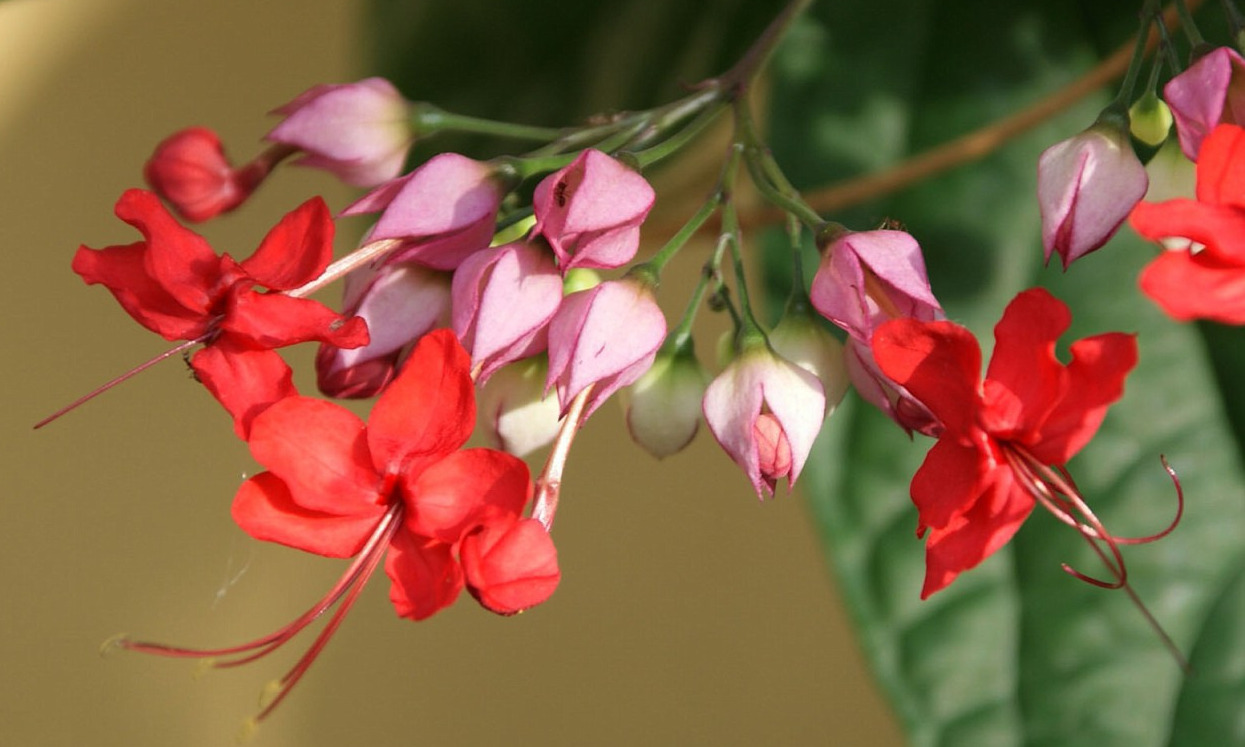
The plant must provide complete comfort to the plant, without which it ceases to form buds, withers, gets sick and is attacked by pests. A set of measures to care for this representative of the flora also includes crown formation, transplantation and (if necessary) reproduction.
Content
Characteristics and species diversity of the flower of clerodendrum
The range of natural distribution of the genus Clerodendrum is concentrated in the tropics of Africa, southeastern and southern parts of Asia. It also grows on the South American and Australian continents, is present in the subtropics, and several species even in a temperate climate (mainly in eastern Asia).
The Latin name of this genus of plant is associated with the Greek words “kleros” (fate, chance, fate) and “dendron” (tree). In the ancient world they used it in religious rites and in medicine.
There are both evergreen representatives of the genus, and deciduous. Life forms are different: vines, shrubs and small trees. On olive-green or red-brown branched shoots, simple petiole leaves with denticles (or without them) along the edges are opposite. The shape of the leaf blades is oval, heart-shaped or ovoid. The length of the leaves reaches 15-20 cm. The color is dark green or emerald.
 You may be interested in:
You may be interested in:Flowering is marked by the appearance of corymbose or paniculate inflorescences that protrude from the crown due to the long peduncle. Flowers are often small, but there are many. The shape more often resembles a butterfly. Almost every species has its own smell. By the way, in the world there are at least 3 hundred species of clerodendrum. In room culture there are not many of them, but they look very original.
Clerodendrum Bunge
Deciduous bush Bunge of Chinese origin grows rapidly, rising to 80 cm. The leaves are whorled, broadly oval, dark green. Sun-drenched sheet plates take on a purple hue.
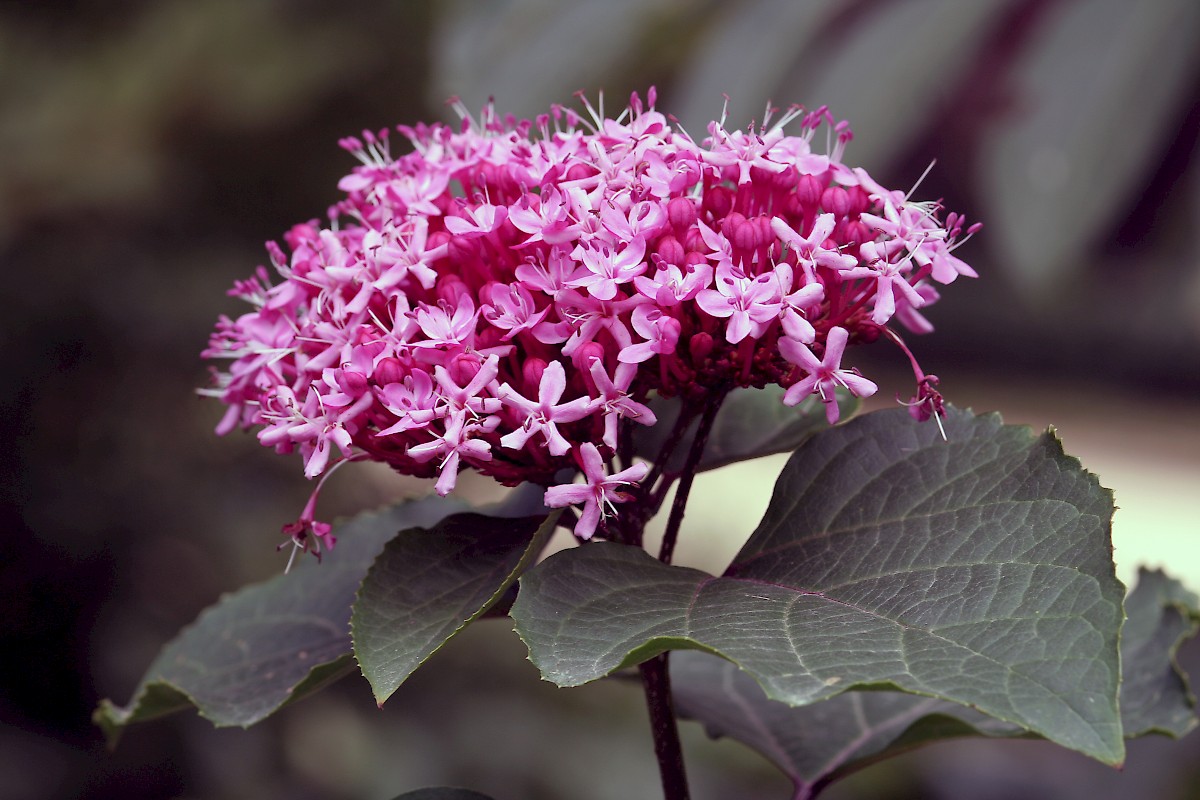
Spherical (or hat-like) inflorescences up to 15 cm in diameter consist of many small pinkish flowers, individually resembling asterisks, and together - fireworks. They are fragrant, but dense leaves, on the contrary, when pressed, smell unpleasant. Bunge blooms all summer, resistant to pests and diseases.
Clerodendrum Prospero
This is a popular variety of the subtropics native of India, Bangladesh, Nepal - the Wallich clerodendrum (or Wallich, Wallich - in different transcriptions). The room is modest in size - up to 50 cm.The branches are long and flexible, green-red.
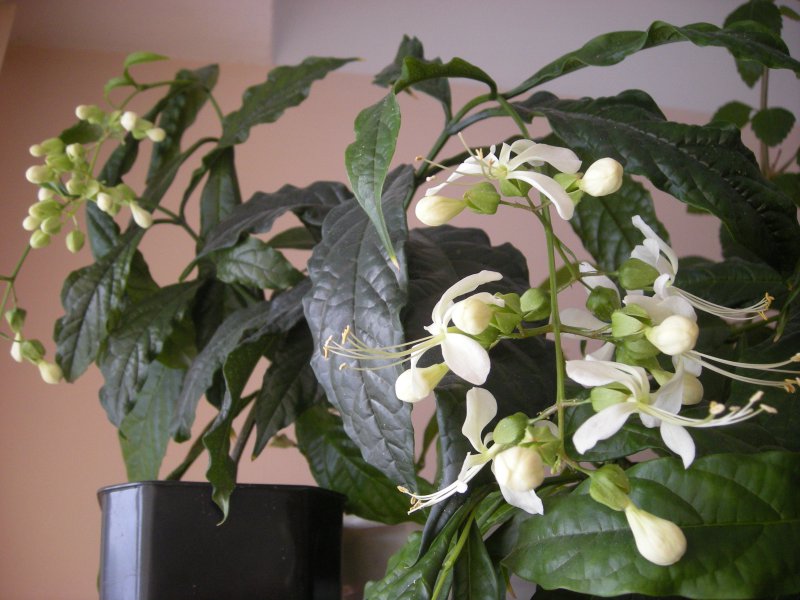
The leaves are dark green, glossy, lanceolate, up to 15 cm in length. The buds open since the end of August within 1.5-2 months. Inflorescences tilted in different directions are decorated with fairly large (2.5-3 cm) cream flowers with 5 oval petals and very long stamens. All this resembles a bride’s veil. Prospero loves plenty of diffused light.
Clerodendrum Specosum
This evergreen spreading species is often cultivated in ampelous form (you can transform it into a bush). It can grow up to 3 m. Another name “most beautiful” was given to it thanks to the flowers with a delicate purple bract and a pronounced red corolla.
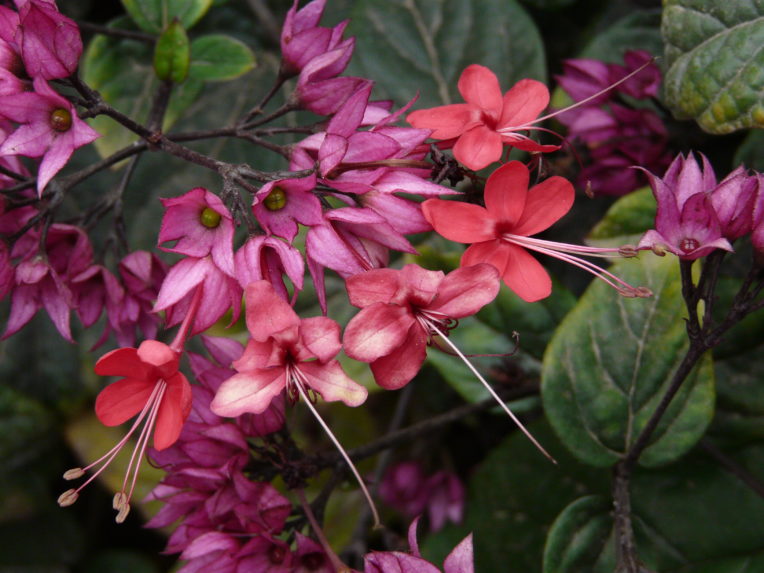
It blooms from July to September on apical panicle inflorescences. The specimen petioles are fleecy, long, dull red, and the leaves are large, bright green, oval, with a sharpening at the end.
Clerodendrum Schmidt
The shrub has dense drooping shoots, on which there are bright green oblong leaves with wavy edges. A special difference is the flowering in bulk of small white flowers exuding a sweet aroma. Clerodendrum Schmidt (also called Chains of Glory) blooms mainly in winter. With good care, this process can occur twice a year.
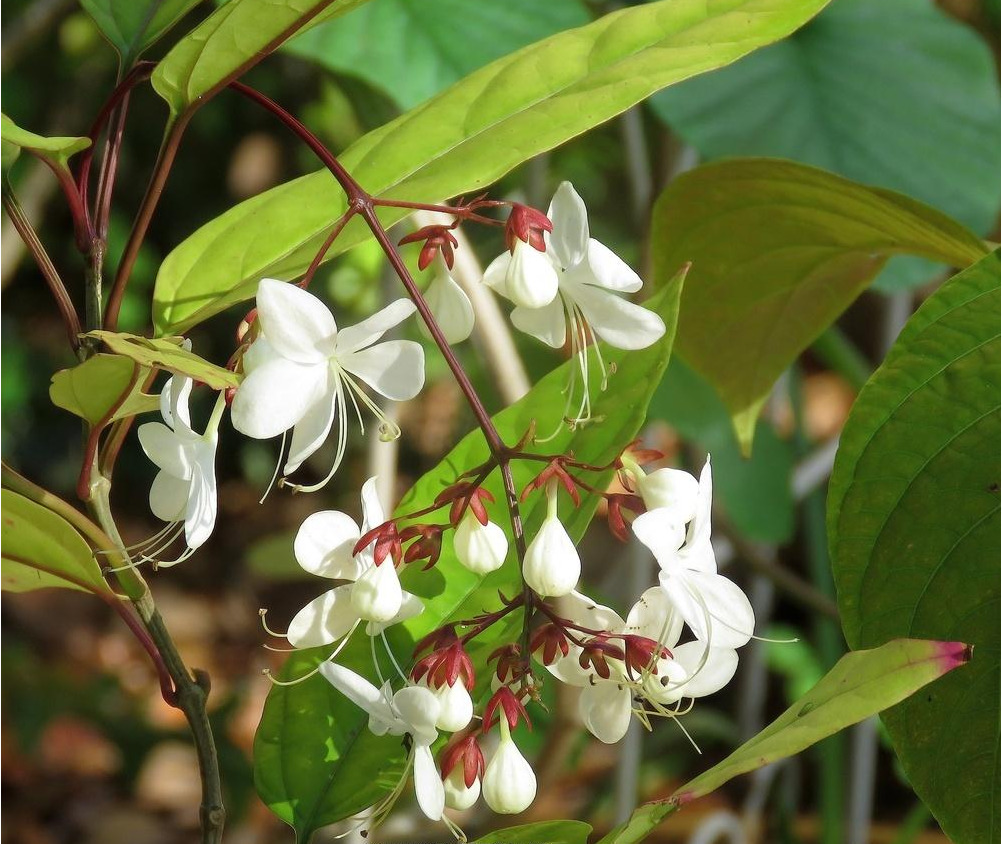
Care clerodendrum at home
Comfortable development of the tree of fate is possible when creating a microclimate similar to natural conditions. Modes of lighting, humidity and temperature, watering and fertilizing should be adjusted according to the season.
Lighting
Demanding for a high light intensity, the flower in winter must be provided with additional lighting. In summer, another concern may arise - direct active rays of the sun. To avoid burns to the leaves, slight shading is required.
Temperature and humidity
From March to November, you should maintain the temperature in the range of 20-25 ° C. In winter, clerodendrum enters a state of rest, which means that it must be placed in a cool place where it will be no more than 15-18 ° C (optimally 12 ° C).

In the warm season, the procedure should occur at least 2 times a day. Cooling and cloudy weather mean a reduction in spraying (2-3 times a week). Additional moisture sources: a household humidifier, a tray with wet expanded clay (you need to put a flower pot in it), an aquarium, etc.
Watering and feeding
According to the seasonal principle, the frequency of watering should also be regulated. Water for him (as well as to increase air humidity) should be soft and warm (25-27 ° C). With the advent of spring, you need to start abundant watering. However, waterlogging should not be allowed. Before each regular procedure, the soil surface must be dry.
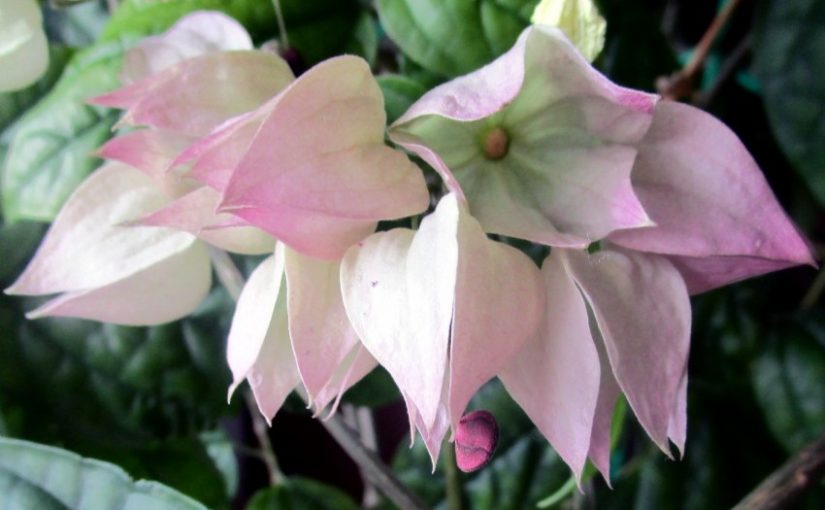
In spring and summer, liquid supplementation is very useful for clerodendrum. Fertilizers are suitable for flowering indoor plants such as Pocon and Agricola. Regular application - 2 times a month, and doses - in accordance with the recommendations of fertilizer manufacturers. If it is necessary to “revive” the foliage, to give it a rich color and gloss, the Emerald organo-mineral complex will help (nitrogen prevails in it).
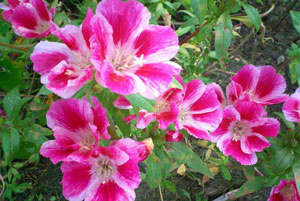 You may be interested in:
You may be interested in:Transfer
The most acceptable method of transplantation is transshipment.Clerodendrum will well master a new capacity in the usual coma of the earth, but with the addition of fresh substrate to the voids of a larger (1-1.5 cm) pot. Good drainage is required (at least 2 cm thick). It is advisable to combine the spring transplant with pruning 1/3 of the shoot length.
Breeding
Florists at room conditions apply propagation methods by seeds and cuttings:
- It is better to sow seeds in February-March in a closed transparent container with a peat-sand mixture, practically without deepening. The greenhouse should be located in a warm and bright place. Before emergence (after 1.5-2 months), periodic watering and ventilation are needed. If there are 4 true leaves, young plants can be dived in a container with a diameter of 7 cm (1 seedling) or 11 cm (3 seedlings).

Seed propagation - Semi-lignified cuttings cut in warm spring weather with 2-3 knots are well rooted in water with the addition of activated carbon. Also needed heat (about + 25 ° C) and light. When the roots appear, they should be planted in a 7 cm wide pot with a loose substrate and covered with transparent material for 2 weeks. Fortified specimens can be handled in bulk containers.
Why does not clerodendrum bloom at home
The owners of this plant expect from him, above all, a beautiful and lush flowering. However, it is not always possible to strictly observe the rules of care, which is why flowering is postponed and factors that adversely affect clerodendrum have to be eliminated.
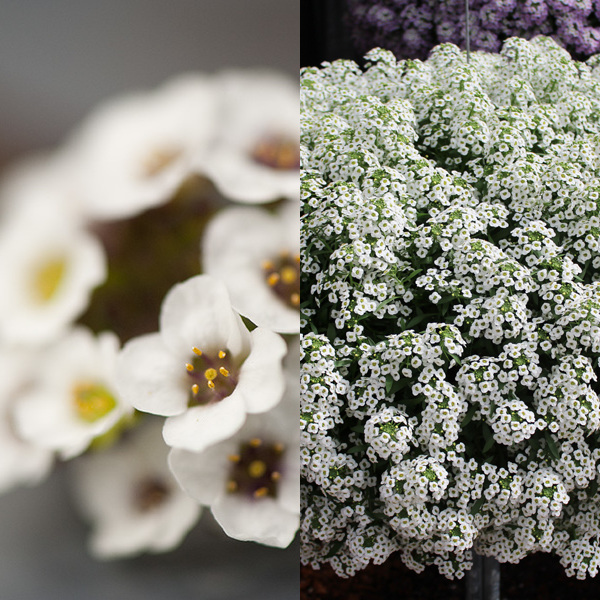 You may be interested in:
You may be interested in:Disease
With excessive watering, the plant can become sluggish, depressed. So you need to check it for root rot. To do this, remove the pet from the pot, thoroughly wash the root system, remove all flaws, sprinkle with charcoal powder and plant in new soil. Irrigation rate should continue to be moderate.
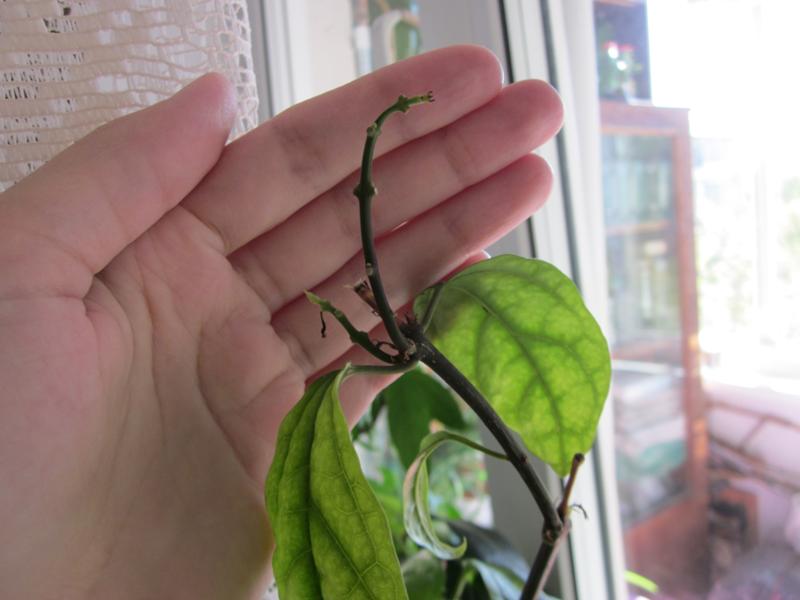
If the leaves turn yellow, and the veins retain their natural green color, then these are symptoms of chlorosis. For watering, you need to use exclusively well-maintained, soft and warm water. In autumn or winter, it is recommended that iron-containing preparations be added on a sheet (Ferrilen, Ferovit, Antichlorosis, etc.).
Pests
If insects are not immediately noticed, then their presence can be judged by certain signs. Among them:
- the plant is covered with a cobweb, the leaves began to fall off - this is the result of the activity of the spider mite;
- the clerodendrum has stopped in growth, the leaf plates are twisted - an aphid invasion has begun;
- foliage turns yellow, curls and falls - a whitefly has appeared;
- the plant is covered with a white cotton-like bloom, the leaves become sticky and begin to die, flower growth slows down - this is an infection with a mealybug.
You can try to cope with small colonies of these pests using alternative methods - by using a soap solution, infusions of garlic, tobacco or onions, as well as by mechanical removal (manually and with a vacuum cleaner). It is recommended to destroy the high number of parasites with the insecticides Aktara, Inta-vir, Aktellik in accordance with the instructions.
Care Mistakes
Due to the lack of water in the soil, the hygrophilous clerodendrum turns yellow, and the inflorescences droop. With insufficient air humidity all this crumbles.
If the leaves are covered with yellow and brown spots, then you need to shade the tree or rearrange it from a highly illuminated window sill. Dry spots on leaf blades may be evidence of exposure to cold air and drafts, which should beware.
If the clerodendrum does not bloom, then this may be due to such reasons:
- violation of the organization of the rest period;
- long stay in the same pot;
- excess or deficiency of nutrients.
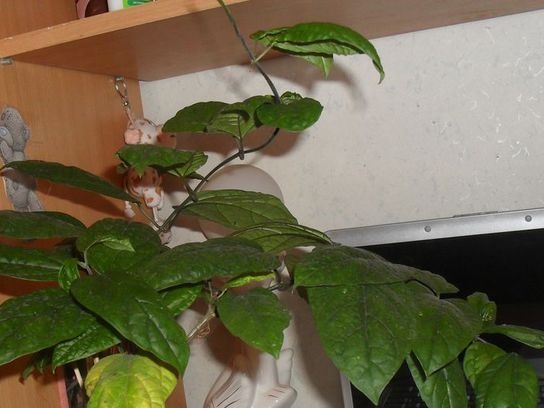
In order for a flower to please flowering, it is necessary:
- provide for 1.5-2 months cool and more economical watering in the winter;
- stimulate branching by regular pruning;
- provide the clerodendrum with a sufficient amount of light;
- during the growing season, carry out balanced dressing;
- after flowering, transplant the plant.
Common Destiny Tree Growing Questions
- first cut off all the shoots, leaving only the strongest;
- as they appear, young branches are removed;
- when the plant reaches a height of 70 cm, the entire crown is slightly shortened;
- pinch the resulting side shoots;
- basal processes are immediately removed.
The tree will grow many young shoots. It is on them that buds will appear.
Any of the types of clerodendrum looks exotic and is sure to transform the room. Caring for a tree is not the easiest. Clerodendrum loves moist air and heat, watering with soft water and top dressing, periodic pruning and transplanting. Propagate it in 2 ways, preferring the seed option to cuttings.
Winter for him is a period of rest. In the warm season, he accumulates his strength for the formation of buds, and then luxurious flowers that need good diffused light. The lack of flowering, as well as other emerging problems, can be corrected and enjoy the beautiful creation of nature.

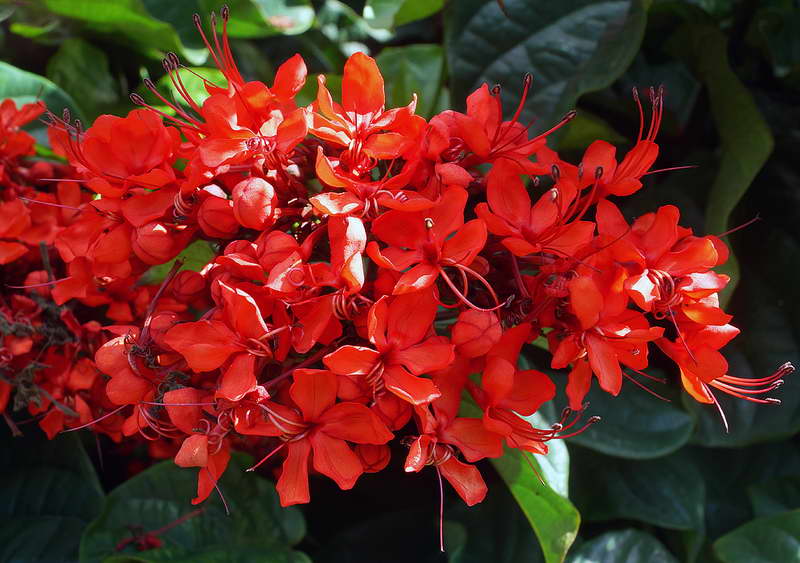
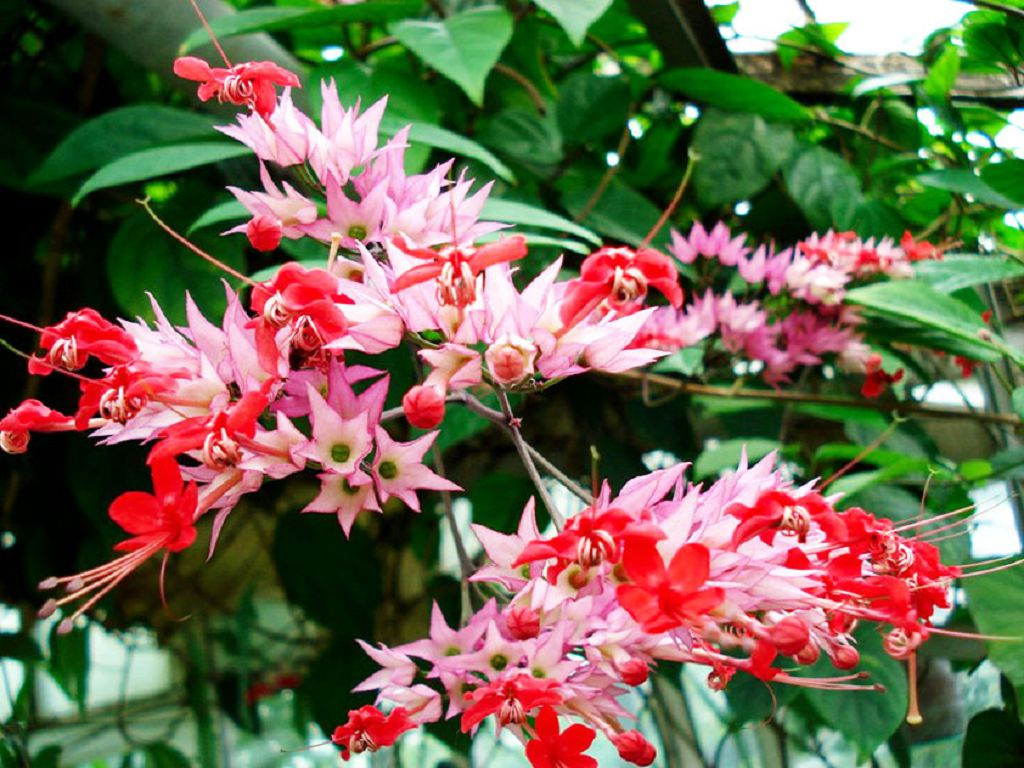




 10 beautiful annuals that bloom all summer
10 beautiful annuals that bloom all summer Sow in the ground, without seedlings: 10 beautiful and unpretentious flowers
Sow in the ground, without seedlings: 10 beautiful and unpretentious flowers Platicodon planting and outdoor care
Platicodon planting and outdoor care Hosta - planting and care in the open ground in the Urals
Hosta - planting and care in the open ground in the Urals